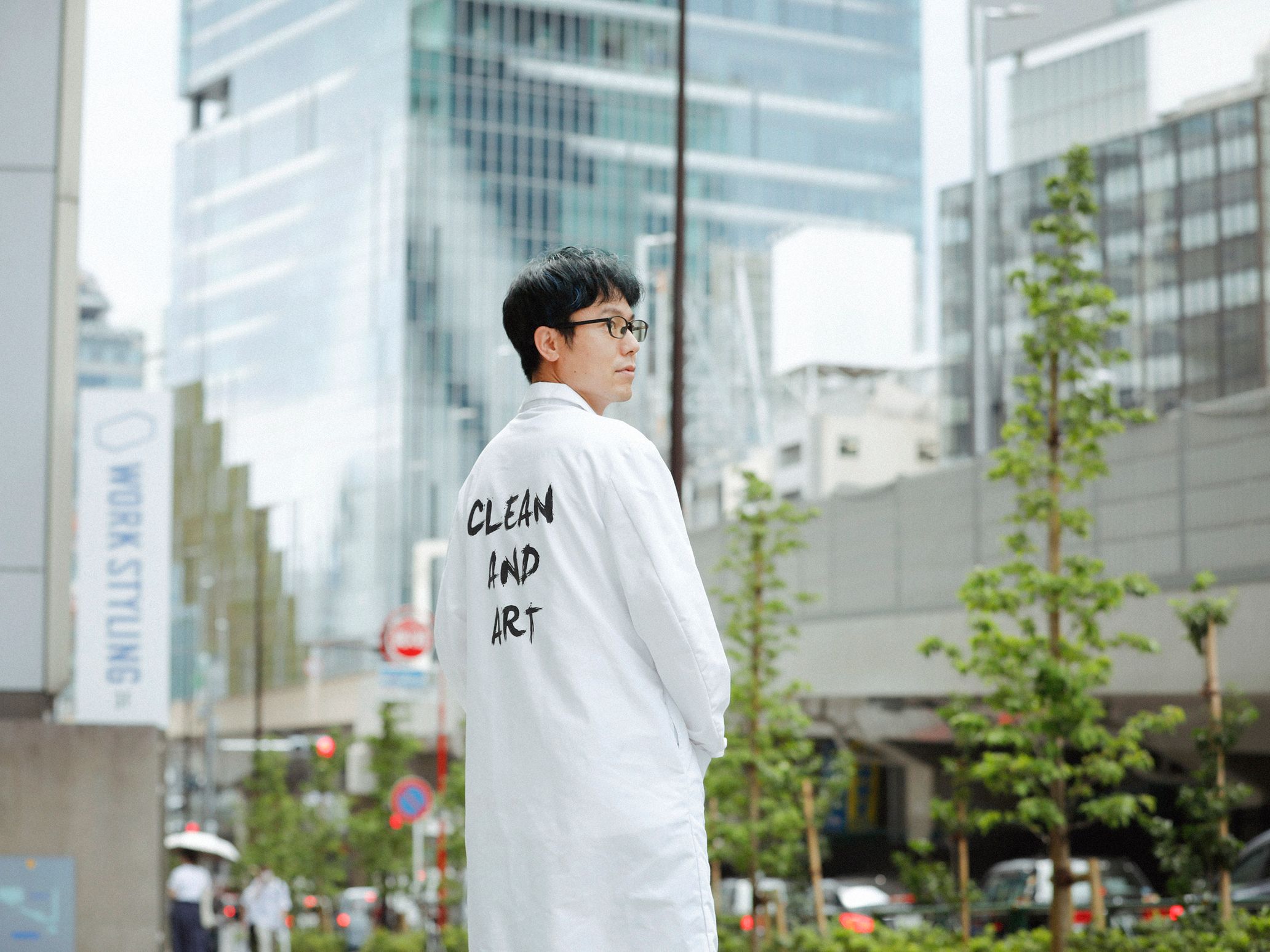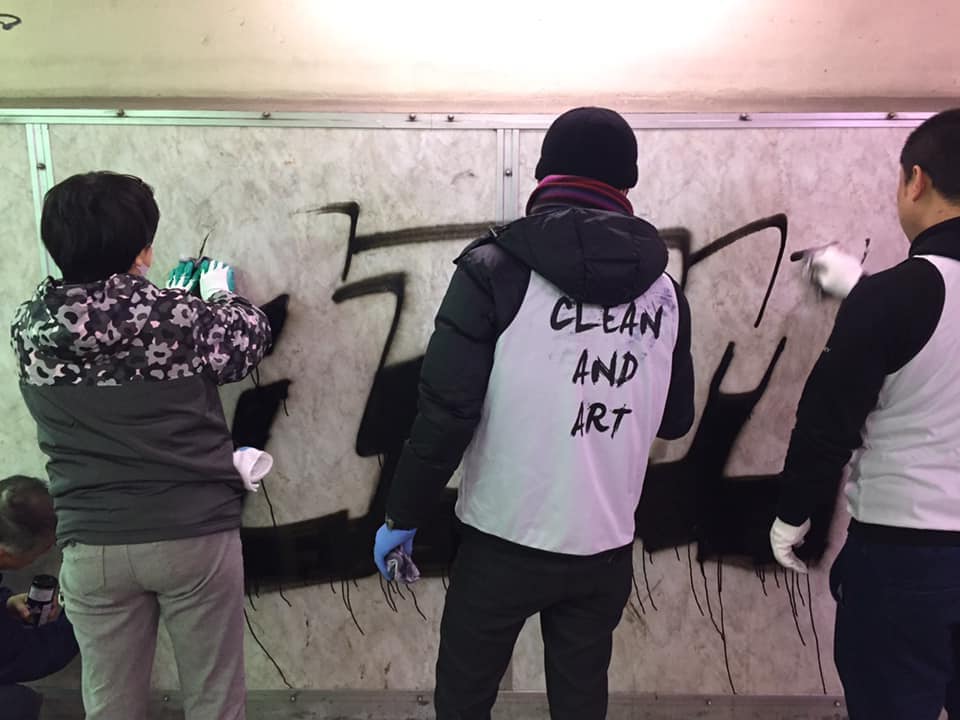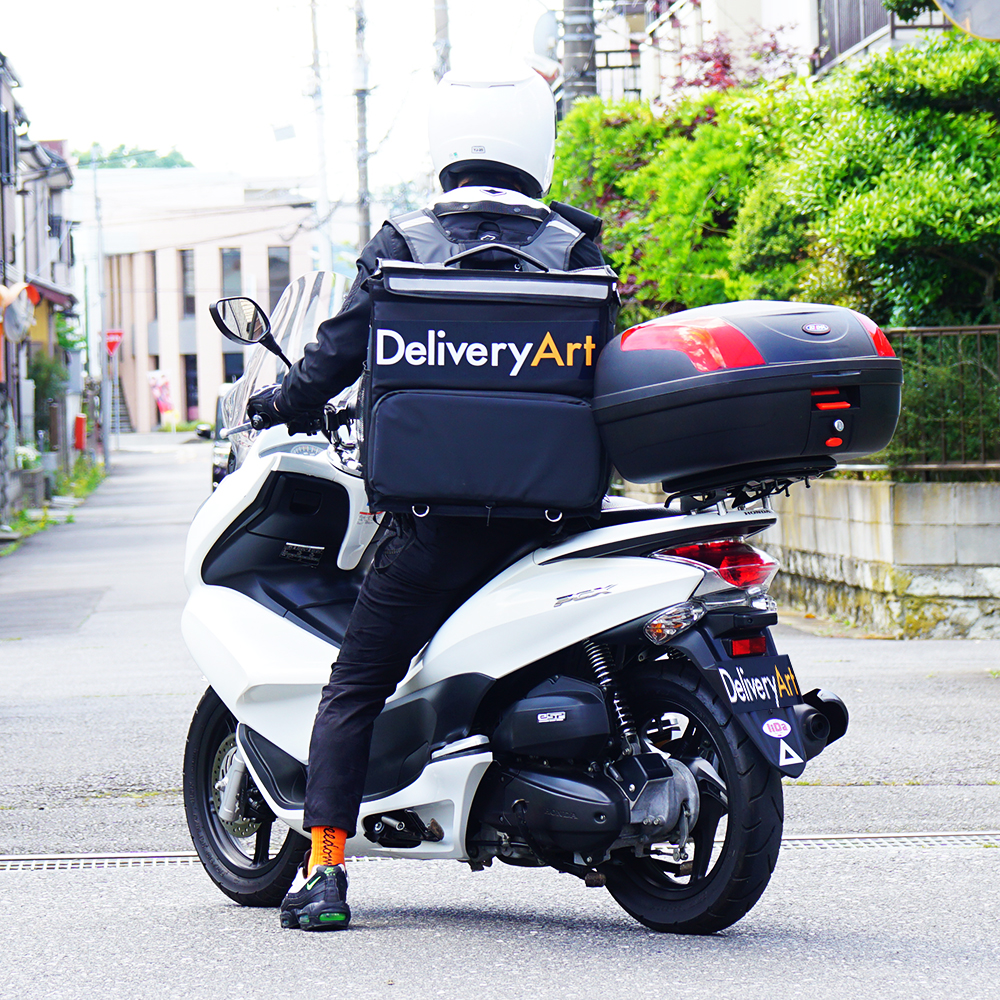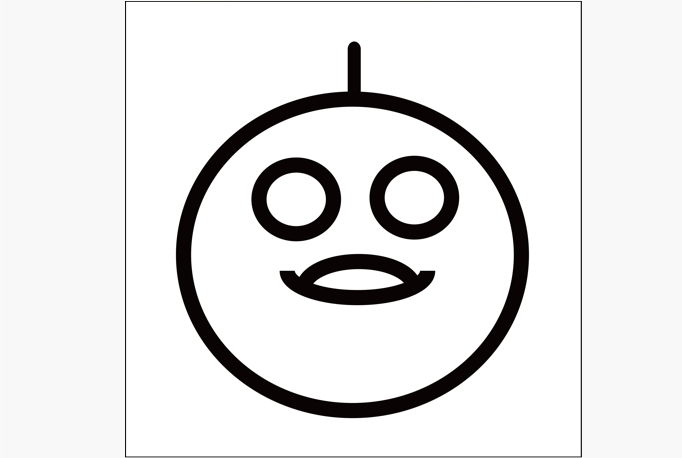Graffiti can be spotted not only in Shibuya, but in other cities as well. From before, there have been debates over whether or not it’s an artform. It can be said that graffiti is one of Japan’s social issues. It was originally a subculture begotten on the streets but the recognition of graffiti as legitimate art is slowly on the rise, due to Banksy’s exhibitions, live painting events, and so on. In the midst of it all, Ken Sobajima, an artist and representative of a general incorporated association called CLEAN & ART, deals with the infinite amount of graffiti head-on. He gets commissioned by the administration and regular citizens to get rid of graffiti in Shibuya, with the themes “clean” and “art” in mind. He got first place for “Shibuya Sustainable Award 2019,” an award given to those leading a sustainable lifestyle and doing good for the environment in their home, neighborhood, school, workplace, and such. What sort of feelings and thoughts does he have with his pro bono work? What is the definition of art to him?
Thinking About Graffiti from Various Perspectives
――Could you first talk about why you decided to start CLEAN & ART?
Ken Sobajima (hereinafter Ken): I initially got started in dealing with scribbles under overpasses in Arakawa ward and creating a more comfortable living space for homeless people via painting murals on walls. As I started working on more murals, I began to come face to face with more graffiti. And so, I did some research about what can be done with the graffiti seen in Shibuya ward as well as Minato ward. That was June of 2017. While I was doing my research, I met a member of an NPO that picks up trash in Shibuya ward. I then started an association called CLEAN & ART in March, 2018 because I was determined to do something about graffiti. In June of 2019, CKEAN & ART became a legal entity and here we are today.
――What sort of research did you do?
Ken: I walked tirelessly around the city and documented graffiti, scribbles, and stickers. I also spoke to people that actually drew on walls and shutters. I thought it was important to learn and listen first and foremost. If the results of my research showed that the people living in the city were accepting and even welcoming of graffiti, then I wouldn’t have started CLEAN & ART. But the people living in the area were angry about it and so I decided to start erasing graffiti. I was interested in graffiti culture and its history so I went to London this January. I saw Banksy’s work, Leake Street Graffiti Tunnel, and Southbank Skate Space and it felt like London was a city with a rich street art culture. I do wonder if this sort of culture can be nurtured in Japan as well.
――How do you erase graffiti and how often do you do it?
Ken: When I get commissioned to work on buildings, I paint over the graffiti with white paint. In terms of stickers, I peel them off. I use products from the home appliances company, Bosch and BEAMS kindly provides me with a uniform. Aside from members of the association, locals and volunteers that find out about the project on social media help us out too. We usually do this once every two months but because of corona, we haven’t been able to get to work. I’m planning on cleaning walls with CLEAN & ART members in August.
――What do you value when it comes to doing this work?
Ken: Before we get started on removing graffiti, I always talk to the volunteers about graffiti culture. I try to explain about the different types of graffiti in the city and the history of the culture in easy terms. It’s vital to look at this from both sides, as opposed to thinking about it from one side; I’d like to act as the middleman and mend the gap. I hope graffiti culture could flourish in the near future. Also, I document whatever graffiti we’re going to remove as a way to archive it. Whenever I see it in Shibuya, I take a photo of it. Graffiti changes day by day, so I take pictures of its evolution. I think I have over 6,000 photos. At this point, I can immediately tell which spots have new artists and graffiti. It’s important to document these things because they keep on disappearing due to the development of the city.
――Which areas have you worked on?
Ken: I got asked by Shibuya ward to draw the symbol of the temporary evacuation shelter under the JR overpass near Miyashita Park. The original picture was done by goen°, which is supervised by Chie Morimoto and I drew the mural. Well, three days after it was done, somebody scribbled on top of it. But I used a special kind of ink, so it’s possible to only remove the graffiti. It was back to what it looked like in no time.
The “Who” and “Where” Doesn’t Matter; What’s Drawn is Art
――What do you personally think about graffiti?
Ken: If somebody looks at a public drawing or writing and deems it unworthy, then it’s regarded as scribbles. My thoughts about graffiti differ from those that dispute over whether or not it’s “art.” Every single thing created by someone is art, no matter who the person is or what the creation itself is. The only difference is whether or not it’s legal. Even if it’s illegal, there are different categories such as whether it’s highly valued and famous like the works of Banksy. Because Banksy’s art is technically illegal like the graffiti we see in the streets, I think it’s okay to get rid of his work. The debate over whether or not graffiti is art is utter nonsense because everything is art.
――What would you like to do with CLEAN & ART?
Ken: Up until this point, I’ve simply painted walls and shutters in white paint but there’s a high chance said walls will get vandalized again. I think drawing something iconic will act as a deterrent and it’ll also bring happiness to the city. So, I’d like to draw some sort of icon. However, drawing on private property could go against Tokyo’s outdoor advertisement regulations and permission for occupying roads. I’m currently thinking about how to overcome this legal obstacle. Some of the regulations might need some reforming. I do think changing rules is also an artform so I want to make it happen.
――I’d like to hear about what you do as an artist outside of CLEAN & ART.
Ken: I mainly show my art at exhibitions but most of my work as an artist was gone this year because of coronavirus. However, I continued making artwork despite not having anywhere to show it and started a project called “Delivery Art.” With this project, people could buy my art online and have it delivered to them by me. It was difficult communicating with the outside world during the “stay-at-home” period, so it was nice to hear from the customers themselves. Because the project was a delivery service, I customized my own UberEats bag and delivered my art by bike (laughs).
――How unique! Do you have any memorable anecdotes?
Ken: Most of the people that answered the door were in their loungewear (laughs). I also went to a previous customer’s home and saw my old artwork there; that was really moving. I’ll also always remember how an article about “Delivery Art” was published in “Shuukan Bunshun” (a Japanese weekly magazine).
――Do you have any plans to start other projects?
Ken: I’m working on a new project that I’m planning on launching in September. I run an office-cum-gallery space in Akasaka and I’m thinking of turning it into an empty gallery. There will only be some artwork and a computer there. The computer will be connected to Zoom, and it’ll show me at home. The keys to the gallery, AC, vacuum cleaner- all of these things will be controlled by a smartphone. An IoT gallery, if you will. Also, I’m going to attach a QR code to the artwork there so that people can buy it online right away. So, all I’ve got to do is wait at home in front of my computer screen (laughs).
――Why do you do things that nobody else does?
Ken: That’s what art is. For me, artists are people that provide new ways of thinking and living. If everybody lived according to just one way of thinking, conflict would arise as a result of that. This applies to graffiti culture as well but it’ll be ideal if we could all understand each other’s positions moving forward. I want to continue creating art that nobody else is creating.
Ken Sobajima
Born in Chiba, Ken Sobajima is an artist and representative of CLEAN & ART. He graduated from Tokyo University of the Arts. As an artist, he’s designed the artwork of the Joban line waiting rooms. He’s also painted a big-scale mural under the JR line overpass in Arakawa ward. Further, he planned art events at Toride Velodrome. With his association, CLEAN & ART, he has won first place for “Shibuya Sustainable Award 2019.” Aside from commissioned work, he also has personal exhibitions where he sells his own artwork.
SOBASUTA LLC
https://www.sobasuta.com
CLEAN&ART
http://clean-and-art.com
Photography Shinpo Kimura
Thanks to café 1886 at Bosch












